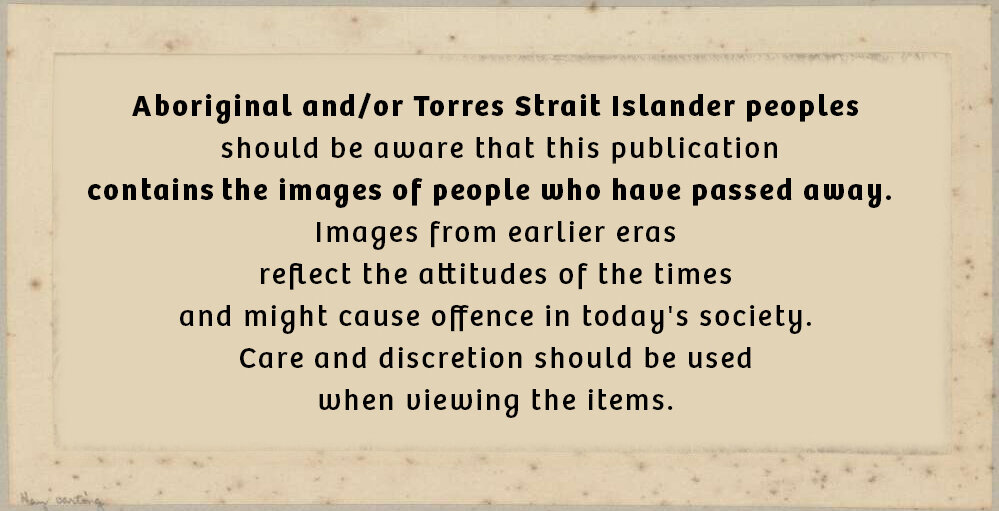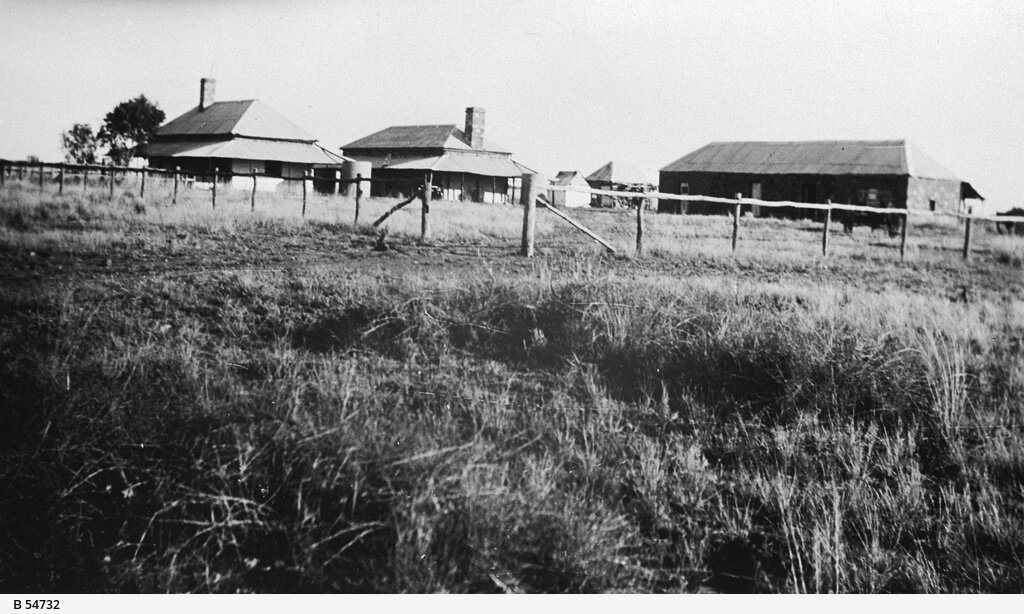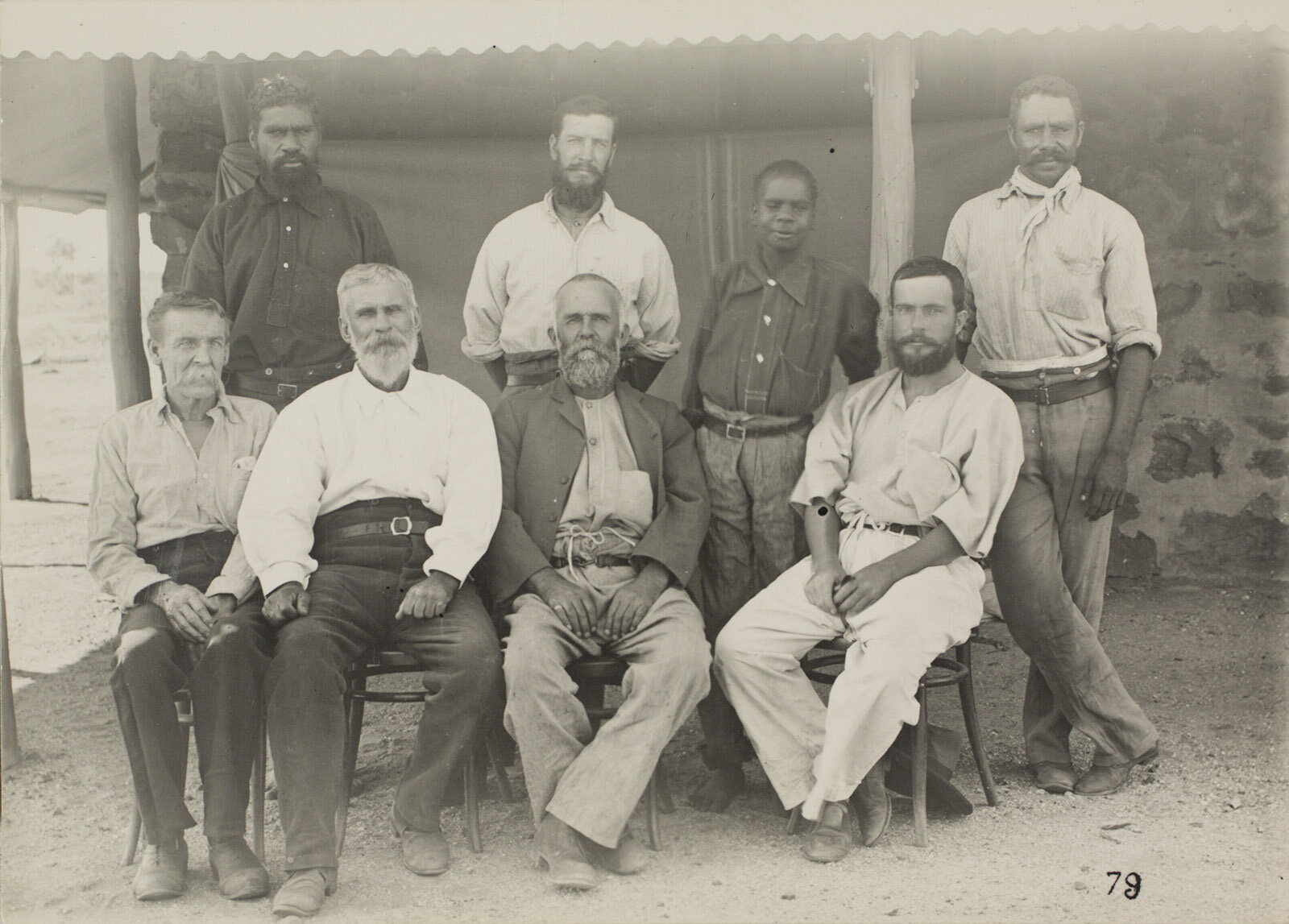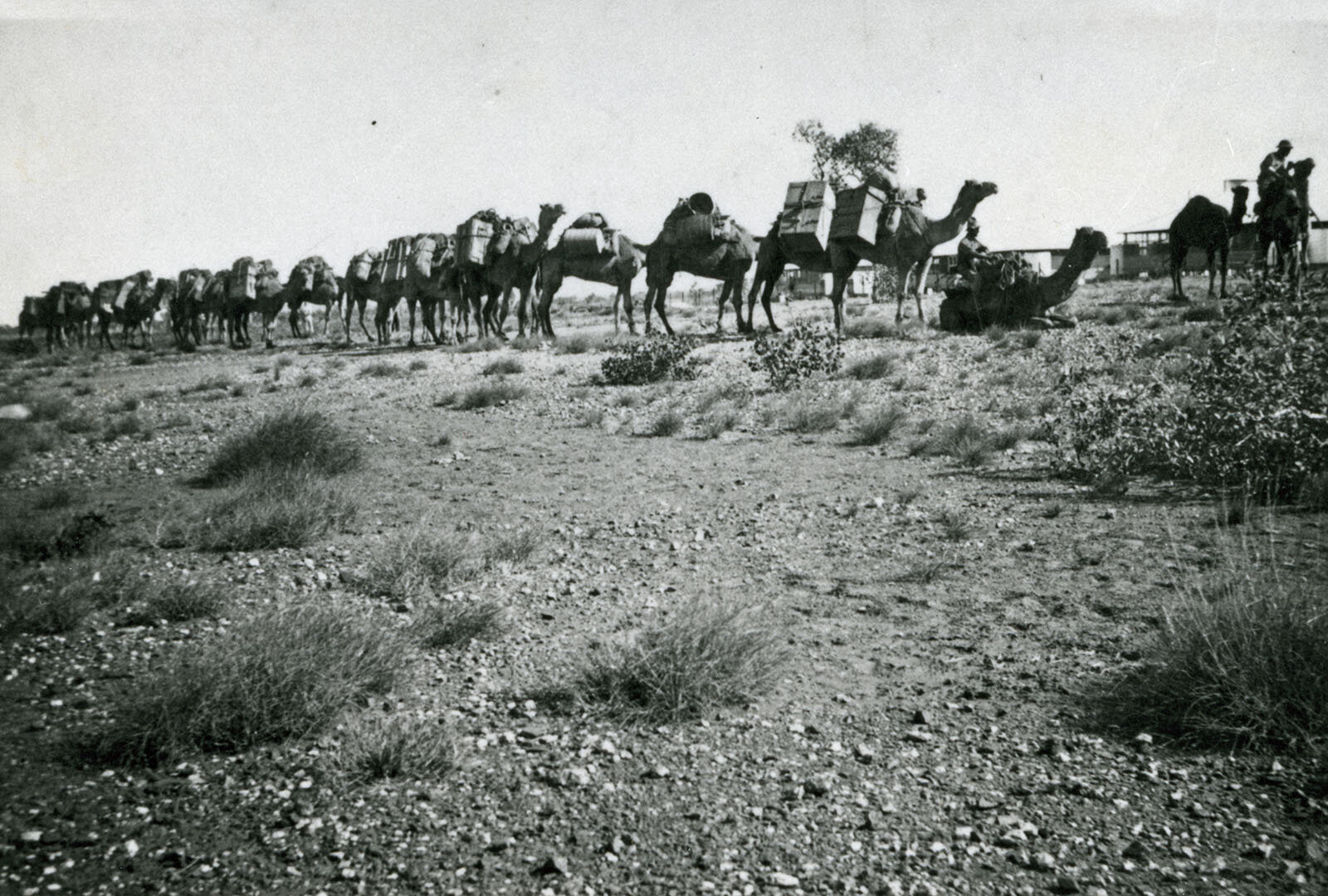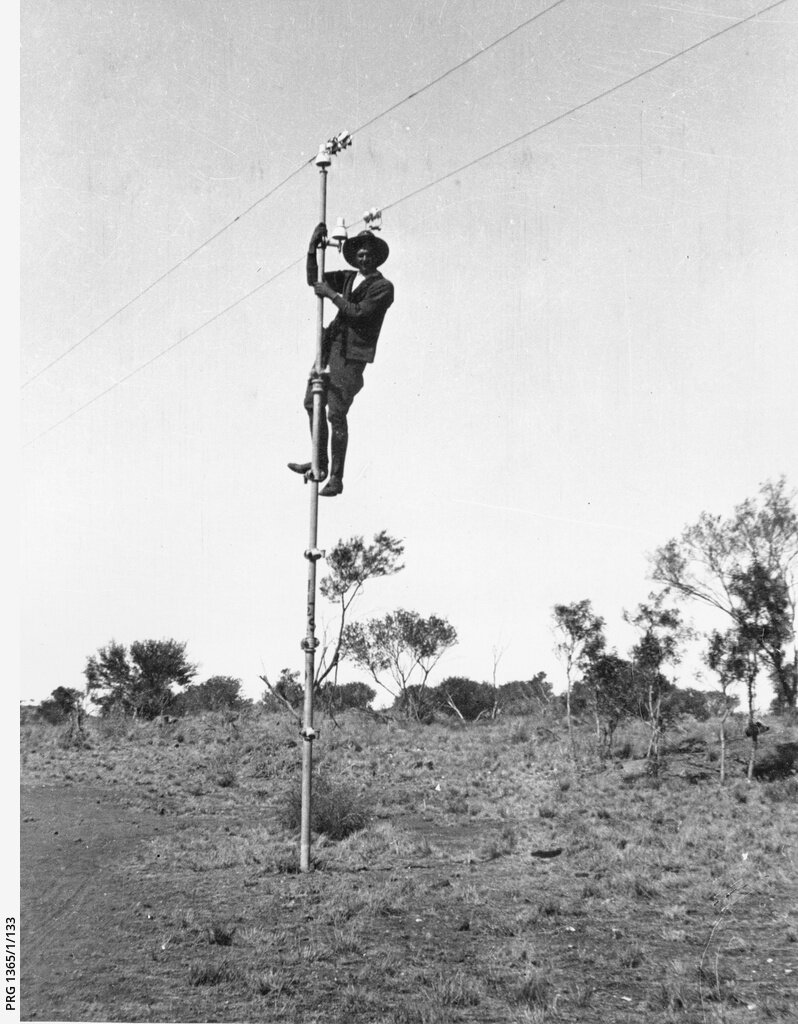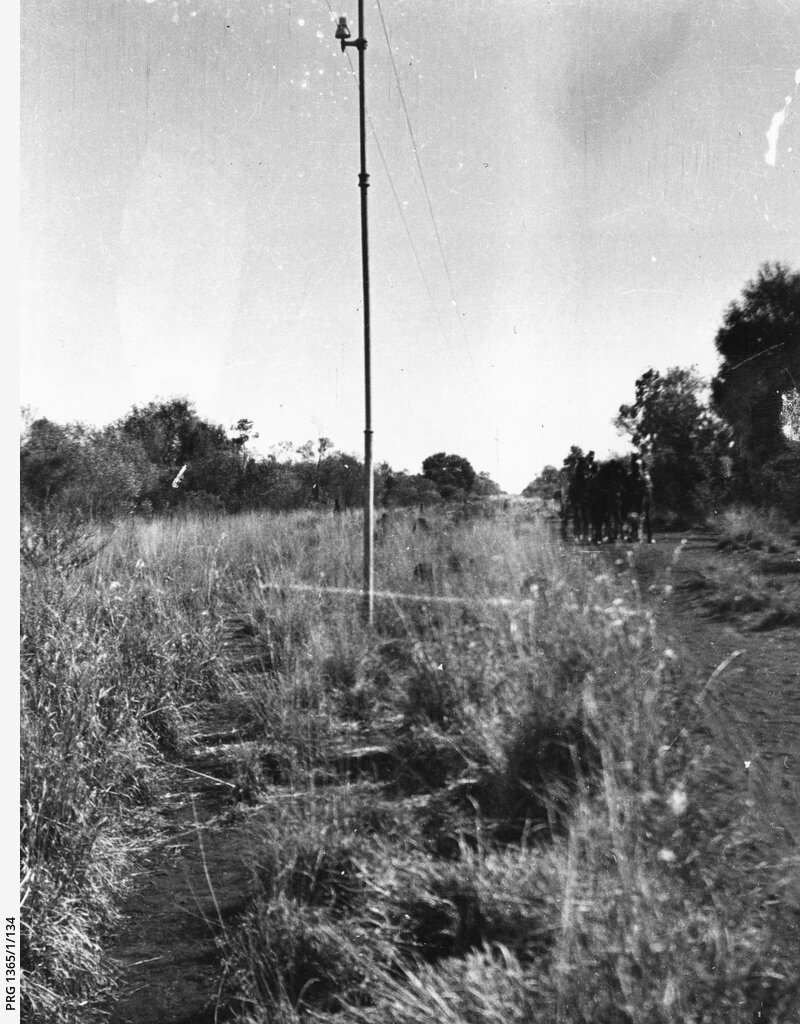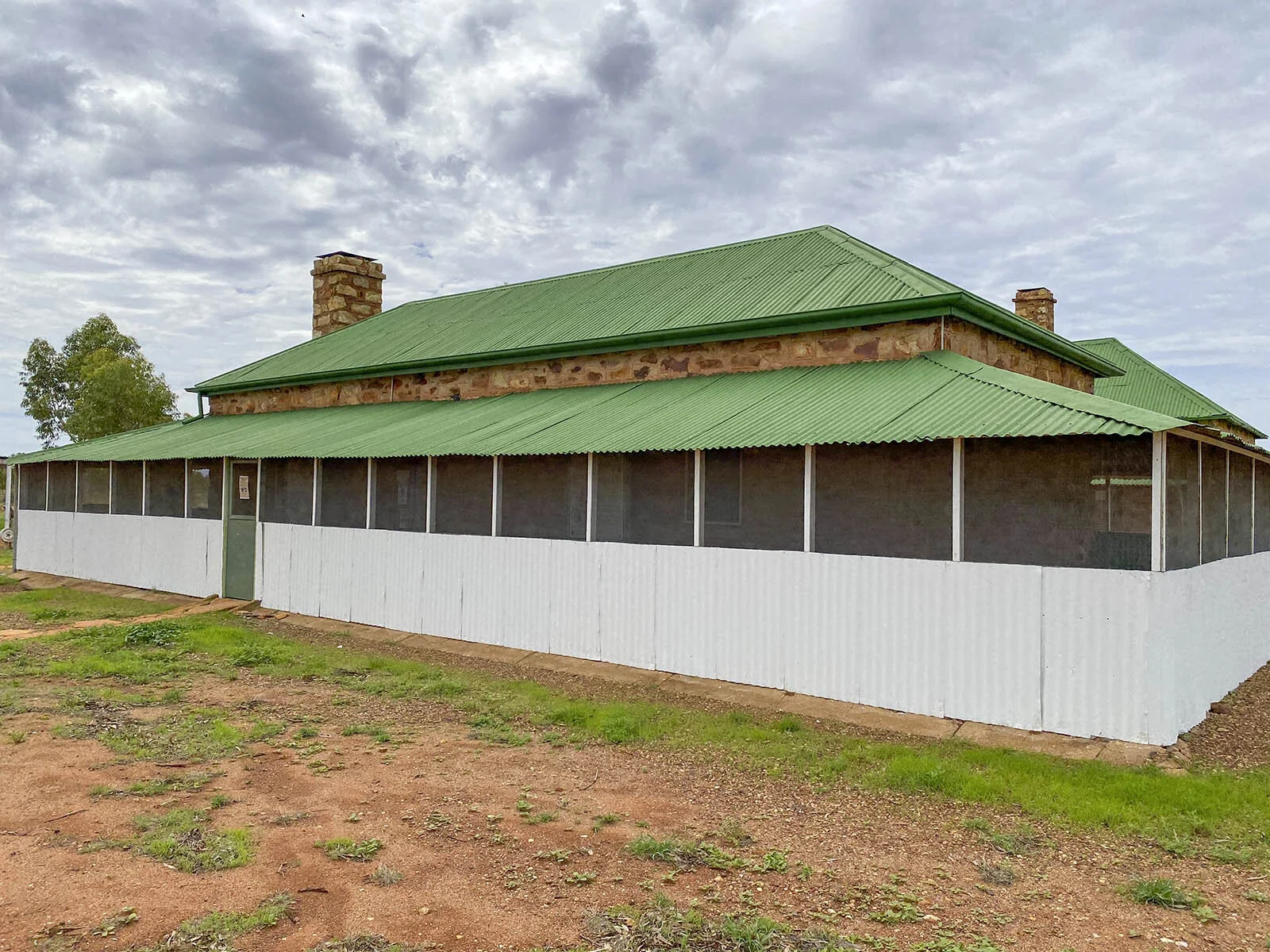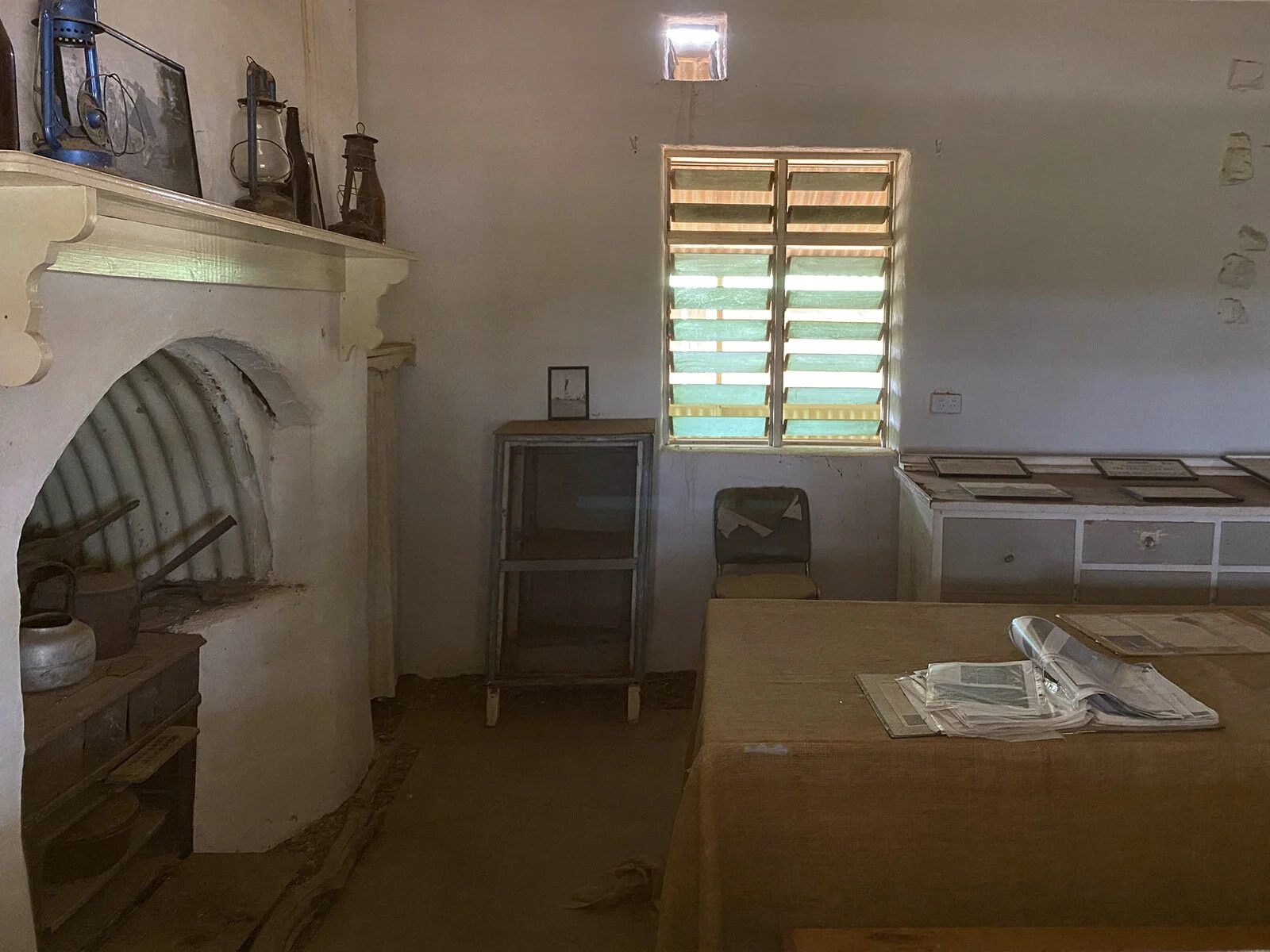Tennant Creek Telegraph Station
Tennant Creek Telegraph Station
Tennant Creek Telegraph Station
Situated just of the Stuart Highway some 10km north of Tennant Creek. This location makes it an ideal stopover to take a break from the long distances covered when travelling along the highway. It serves as a reminder of what was endured to establish and maintain communication with the rest of the world. A commodity we now take for granted as we travel with mobile phones that connect without any delay to the world.
NOTE to fully appreciate this site obtain the keys to access the interior of the buildings from the information centre at Battery Hill Mining centre in tenant creek. Also, download the self-guided walk information sheet from the NT Gov website.
Aboriginal and/or Torres Strait Islander peoples should be aware that this publication contains the images of people who have passed away. Images from earlier eras reflect the attitudes of the times and might cause offence in today's society. Care and discretion should be used when viewing the items.
History
From the Heritage Register:
“The Overland Telegraph Station at Tennant Creek is situated on land that traditionally belongs to the Warumungu people and is near a very significant sacred site called "Jurnkurakurr" which is where a Dreamtime being "Jalawala" (the black-nosed python) lives. When the Telegraph Station was established it became an important place of contact between Aboriginal and non-Aboriginal people with some people being employed there throughout history.” (3)
John McDouall Stuart’s successful crossing of the continent in 1862 set the groundwork to establish the Overland Telegraph Line that was initiated in 1870 and completed in 1872. The line was Australia’s first link to Britain and the rest of the world. Tennant Creek Telegraph Station was originally a timber building with three rooms but by 1875 the present-day stone buildings were erected. In his Report printed in the Adelaide Observer of 11 January 1873, Todd noted that " in the interior we have six persons at each station, viz., the Stationmaster, Assistant-Operator and four men. There are also about 20 horses — draught and saddle — and in most cases a team of bullocks besides spare bullocks for food. The stations are all well provisioned - most of them up to the end of 1874". (1) The line stretched from Adelaide to Darwin about 3200km with a repeater station approximately every 250km. The line provided a route to the interior for early explorers, pastoralists, and prospectors while the telegraph stations became stopovers for water, provision, medical services, and news.
Walter Baldwin Spencer’s Diary from the Spencer and Gillen Expedition 1901-1902 has the following extracts regarding life at the the telegraph station.
July 24. Camp 39 Tennants Creek
Tennants Creek station the most forlorn and hopeless looking kind of place imaginable.
July 25 Camp 39. Tennants Creek
Tennants Creek Station is a primitive kind of place. There are just two parallel stone buildings the front one with 3 rooms the back one with 2. Fortunately for us they have a really good garden here with plenty of vegetables. At dinner today we had cauliflower, carrots & parsnips and at tea cucumber & beetroot!
July 26. Camp 39. Tennants Creek
As I told you yesterday we are living in luxury thanks to the garden but of course we shall be out of reach of this often as before long we go off with pack horse to visit natives & special places a long way out to the east. I have never even in England seen vegetables grow better than they do here. The cauliflowers not only have beautiful heads but their leaves grow to a length of 4 feet. Today we have had cauliflower, carrot, pumpkin, beetroot, cucumber & lettuce & tomato. However in an outlandish & terribly desolates spot like this one wants something comfortable or else the life would be awful. I cant think how the two officers at the station manage to exist year after year.
August 21. Camp 39. T.K.
It would be a very bold stranger who would venture near this camp (the Aboriginal camp) at night - there are at least 200 dogs about and 50 or 60 fully armed gentlemen.(5)
In 1927 Charles Windley, a telegraph operator found gold on what would become Tennant Creek's first mine to the south of the telegraph station. The gold rush did not commence, however, until after Frank Juppurla, a local Indigenous man, took gold to telegraph operator Woody Woodruffe in December 1932. (2) This facilitated the development of Tennant Creek Town with its own post and telegraph office. By 1935 the old Tennant Creek Telegraph station closed. The station was however retained to accommodate line maintenance staff until 1950.
In 1946 Con Perry made use of the 20 square mile grazing lease around the telegraph station to provide grazing for cattle and donkeys to provide meat to Tennant Creek town. In 1951 the vacated buildings were used to accommodate Mr. Perry’s staff and the butcher shop. The remnants of the cold room and butchering blocks are still evident today. From 1955 the building became a station 'homestead' with modifications and additions made to suit their new purpose. It was nominated for heritage listing in 1995 and gazetted as a heritage site in 2001. (3)
The Site
The site consists of six buildings and a cemetery.
The Kitchen and Living area (requires a key to access)
The Telegraph Office (requires a key to access) and has three rooms. A battery room, the central telegraph office with its fireplace that was manned 24/7, and a bedroom.
The Cellar is dug down into the ground and constructed in a fashion to lower the temperature and keep food fresh.
Smoke House is found next to the cellar.
Butcher building, that was the men’s hut providing accommodation to the linesmen and sheds for wagons and equipment. The end room shows the butcher’s area that would have been implemented by Con Perry.
Blacksmith workshop used to repair equipment and make tools.
The Cemetery where Archibald Cameron (a linesman) and Bryan Thomas Nugent (from Banka Banka Station) are buried.
What to Explore in the Area
When in Tennant Creek take some time to visit the local attractions. Located in and on the outskirts of Tennant Creek are:
Battery Hill Mining Centre
Nyinkka Nyunyu Art and Culture Centre
A short distance to the north of Tennant Creek is:
Looking for a bush camp some 50 km to the north west of Tennant Creek is the fossicking area of Warrego.
References
1) Telegrams in Australia: 1854-1988. Australia - South Australia/Northern Territory.
Telegraph Offices along the Overland Telegraph line. Retrieved, March 22, 2021, from:
2) Monument Australia. -Tennant Creek Gold Rush Retrieved, March 22, 2021, from:
3) Northern territory Government, Heritage Register. - Tennant Creek Telegraph Station. Retrieved, March 22, 2021, from:
http://www.ntlis.nt.gov.au/heritageregister/f?p=103:302:::::P302_SITE_ID:75
4) Northern Territory Government information and services. - Tennant Creek Telegraph Station Historical Reserve. Retrieved, March 22, 2021, from:
https://nt.gov.au/leisure/parks-reserves/find-a-park/find-a-park-to-visit/tennant-creek-telegraph-station-historical-reserve
5) Spencer, Walter & Gibson, Jason & Milton, Heather. (2013). Walter Baldwin Spencer’s Diary from the Spencer and Gillen Expedition 1901-1902.
Photo 1
Overland telegraph station at Tennant Creek. Approximately 1880
Image Number oai:collections.slsa.sa.gov.au:(AuASA)b20425648, B 22470
B-22470
Photo 2
State Library of South Australia
Image Number oai:collections.slsa.sa.gov.au:(AuASA)b20767869, B 54732
1939
B-54732
Photo 3
Tennant Creek telegraph station staff. Names could be: Jim Field, who was in charge; Foster, a linesman; W.J. Wilson; Curtis; Squires. Who is whom is not known.
1906-04-28
Northern Territory Libraryhttps://creativecommons.org/share-your-work/public-domain/pdm
(1906). Telegraph station staff. Available at:https://hdl.handle.net/10070/728098 [accessed 22 March 2021]
ph0756-0001
Photo 4
(1936). Camel train. Available at:https://hdl.handle.net/10070/720103 [accessed 22 March 2021]
Camel train passing through Tennant Creek
ph0021-0002
Photo 5
State Library of South Australia. The overland telegraph line [PRG 1365/1/133] • Photograph. [accessed 22 March 2021]
https://collections.slsa.sa.gov.au/resource/PRG+1365/1/133
Bob Carew up a pole of the Overland Telegraph Line.
PRG-1365-1-133
Photo 6
State Library of South Australia. The overland telegraph line [PRG 1365/1/134] • Photograph. [accessed 22 March 2021]
https://collections.slsa.sa.gov.au/resource/PRG+1365/1/134
A view of the overland telegraph line.
PRG-1365-1-134


